#covid-19 new cases india
Explore tagged Tumblr posts
Text
India Reports 602 New Covid 19 Cases: बढ़ता जा रहा कोरोना का खतरा, बीते 24 घंटे में मिले 602 नए संक्रमित, 5 की मौत
India Reports 602 New Covid 19 Cases: भारत में कोरोना तेजी से फैल रहा है. पिछले 24 घंटों के दौरान देश में कुल 602 नए कोरोना वायरस मामले सामने आए हैं। इस दौरान 5 मरीजों की मौत भी हुई है. 602 नए संक्रमितों की पहचान के साथ गतिशील कैसलोएड 4,440 तक पहुंच गया है। India Reports 602 New Covid 19 Cases स्वास्थ्य और परिवार सरकारी सहायता शाखा ने मंगलवार को कहा कि कर्नाटक सरकार ने पिछले 24 घंटों में…

View On WordPress
0 notes
Text
Covid JN.1 LIVE: 63 cases of new variant reported in 24 hours, Karnataka Cabinet sub-committee meeting today
COVID-19 JN.1 Variant News Live Updates: Amid growing concerns over rising cases of COVID-19 sub-variant JN.1, a total of 63 cases of the sub-variant have been detected in India as of Sunday. Citing Health Ministry sources, ANI on Monday reported that Goa is the biggest contributor to the cases, where 34 cases were reported in a single day. Apart from Goa, nine are from Maharashtra, eight from…
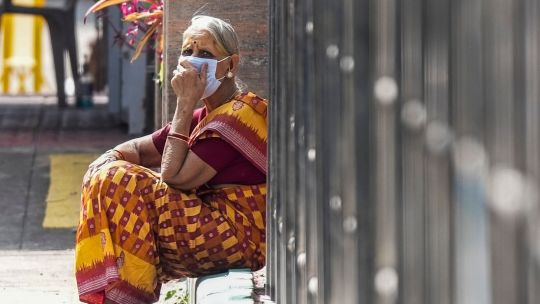
View On WordPress
#Cabinet#cases#Corona virus cases in my state#COVID#covid 19 cases in india#Covid 19 JN.1 variant#covid 19 latest updates#covid 19 live updates#Covid JN.1 LIVE: 63 cases of new variant reported in 24 hours#COVID JN.1 variant#covid kerala#covid kerala news#covid live updates.covid restrictions#covid maharashtra news#covid new variant#Hours#JN.1#Karnataka#Karnataka Cabinet sub-committee meeting today#Live#Meeting#reported#subcommittee#Today#today&039;s covid cases#variant#What is the new variant of Covid?
0 notes
Text
भारत ने लगातार दूसरे दिन 24 घंटे में 1,800 से अधिक नए कोविड मामले दर्ज किए | India records more than 1,800 new COVID instances in a day for the second straight day;

केंद्रीय स्वास्थ्य मंत्रालय के सोमवार को अपडेट किए गए आंकड़ों के अनुसार
पिछले 24 घंटों में दर्ज किए गए 1,805 नए कोविड मामलों के साथ, सक्रिय मामलों की संख्या 10,000 के आंकड़े को पार कर गई है, जो संक्रमणों में निरंतर वृद्धि का संकेत है।
भारत ने लगातार दूसरे दिन 1,800 से अधिक नए कोविद मामले दर्ज किए, सक्रिय केसलोएड 10,000 से अधिक हो गए। 5,30,837 पर कुल मृत्यु के साथ छह और कोविद से संबंधित मौतें हुई हैं।
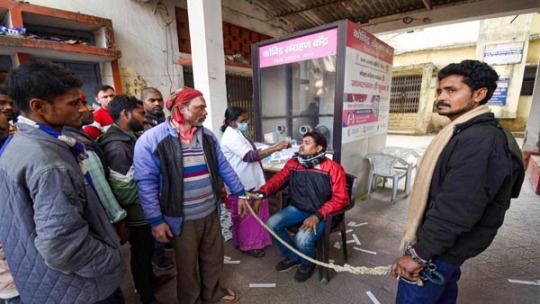
भारत में कोरोनोवायरस संक्रमण में वृद्धि जारी
केंद्रीय स्वास्थ्य सचिव राजेश भूषण आज राज्यों के स्वास्थ्य सचिवों और वरिष्ठ अधिकारियों के साथ कोविड-19 की तैयारियों की समीक्षा करने के लिए बैठक करेंगे, क्योंकि भारत में कोरोनोवायरस संक्रमण में वृद्धि जारी है। समीक्षा बैठक में सभी जिलों में स्वास्थ्य सुविधाओं पर अगले महीने नियोजित राष्ट्रव्यापी मॉक-ड्रिल का विवरण सूचित किया जाएगा।
केंद्रीय स्वास्थ्य मंत्रालय और भारतीय चिकित्सा अनुसंधान परिषद द्वारा जारी एक संयुक्त सलाह के अनुसार, सार्वजनिक और निजी दोनों स्वास्थ्य सुविधाओं से दवाओं, अस्पताल के बिस्तर, चिकित्सा उपकरण और चिकित्सा ऑक्सीजन की उपलब्धता का जायजा लेने के उद्देश्य से अभ्यास में भाग लेने की उम्मीद है। आईसीएमआर).........
#Covid cases#Indian health advisory#indian news#politics#indian politics#world news#india#covid test#covid cases#long covid#icmr#WHO#covid isn't over#covid news#covid 19#face mask
0 notes
Text
Covid 19 in India | Coronavirus | COVID19 | covid19 cases | Covid19 Top updates | Covid19 news | Today Covid case
Covid 19 in India: First death from Corona after three months in Bengal, 1890 infected confirmed in 24 hours 1,051 patients have also recovered in the same period, which has increased the number of patients recovering from the corona to 4,41,63,883। As a result, India’s recovery rate is 98.79 percent. Image Source: FREEPIKFirst death from Corona after three months in Bengal Covid 19 in India:…
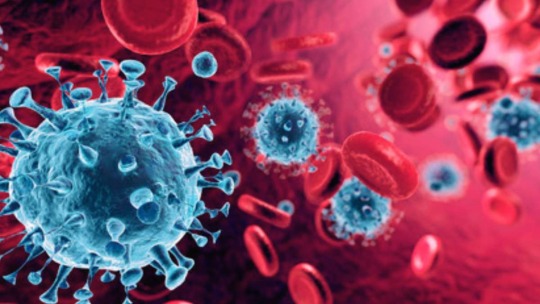
View On WordPress
#Coronavirus#Covid 19 in India#COVID19#covid19 cases#Covid19 news#Covid19 Top updates#Today Covid case
0 notes
Text
So...H5N1 (Bird Flu) is here
And all signs are pointing to a global pandemic more fatal than the one prior. The initial stages of this are a rinse and repeat of Covid-19's arrival, which saw a lot of state repression of information on the severity of infection rates and delayed enforcement of safety protocols.
Earlier this year, the U.S. saw its first death of an animal-to-human transmission of H5N1 in Louisiana; however with the rollback of safety and health federal regulations in the wake of the returning Trump administration, compounded by an executive-mandated communications blackout of the FDA, CDC and withdrawal from the WHO, conditions are ideal for a nightmarish outbreak scenario should transmissions evolve to human-to-human.
The following are reports coming from the U.K., U.S., and China in the last couple of days:

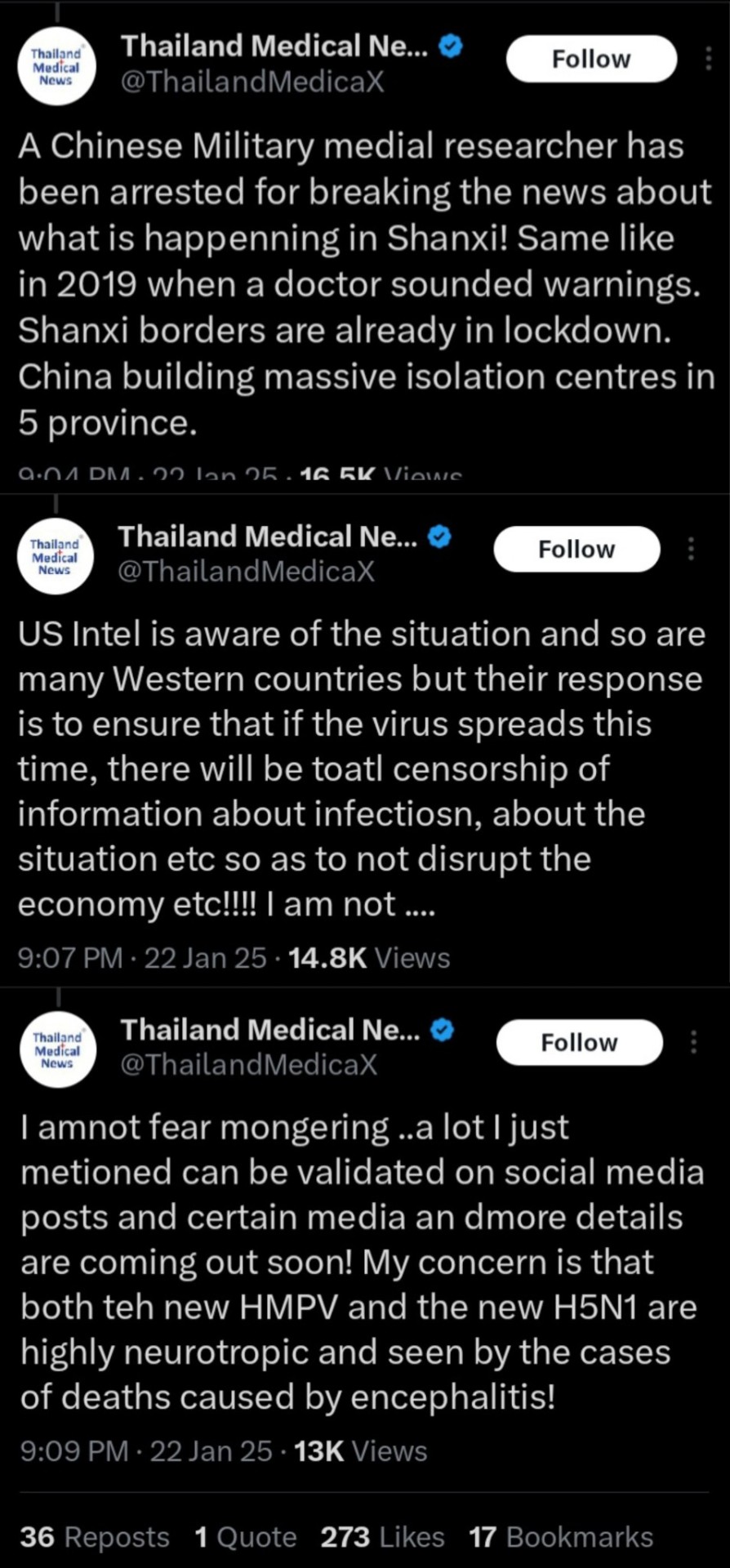


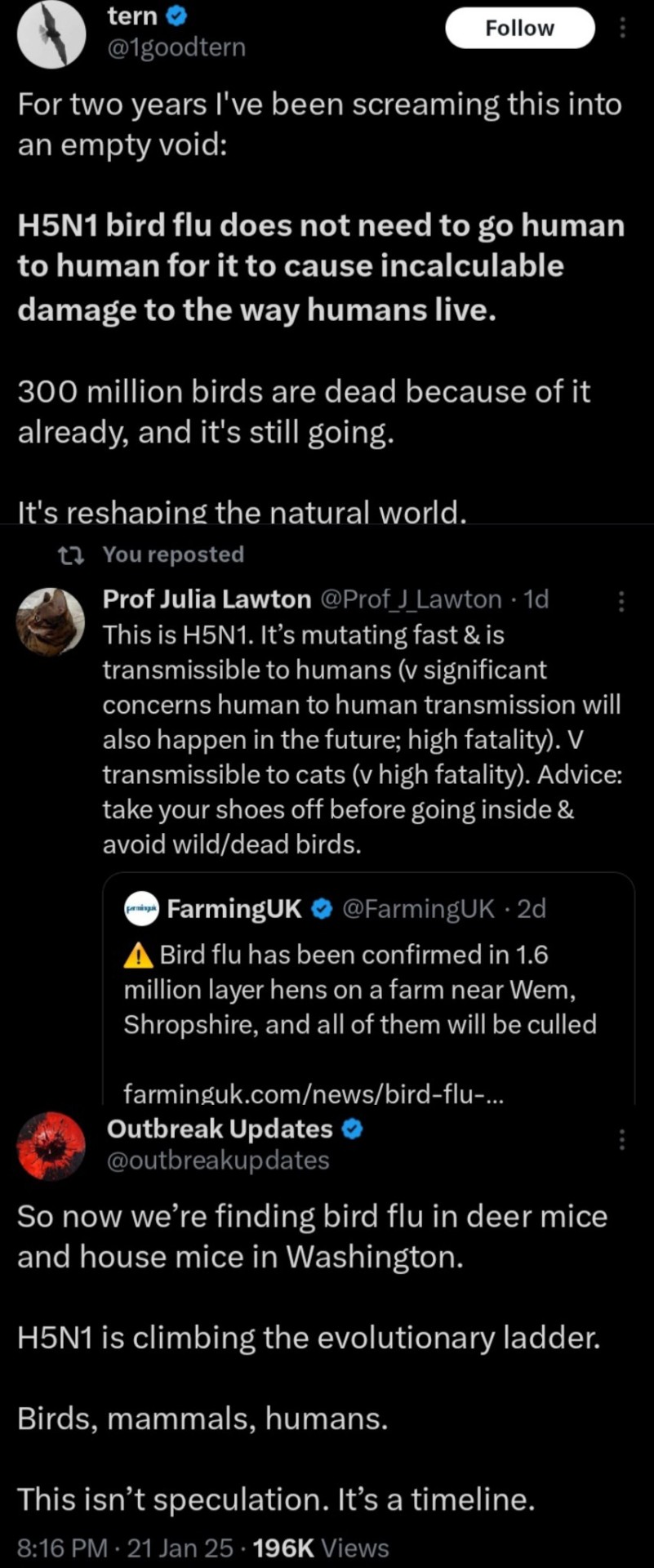
This is a CDC report from 2 weeks ago:
"As of January 6, 2025, there have been 66 confirmed human cases of H5N1 bird flu in the United States since 2024 and 67 since 2022. This is the first person in the United States who has died as a result of an H5 infection. Outside the United States, more than 950 cases of H5N1 bird flu have been reported to the World Health Organization; about half of those have resulted in death."
As of right now, I would highly implore everyone to cease the consumption of eggs and poultry products for the time being. There is currently an egg shortage due to "quality standards" in the U.S. and prices have already gone up dramatically. Get involved in community gardens and get in contact with local farmers--see what you can get directly from there! Mask up, update your vaccinations, practice proper hygiene, avoid physical contact with wild animals (birds especially), and stay safe! Look after your neighbors!
UPDATE: Weekend of 1/24 - 1/26/2025
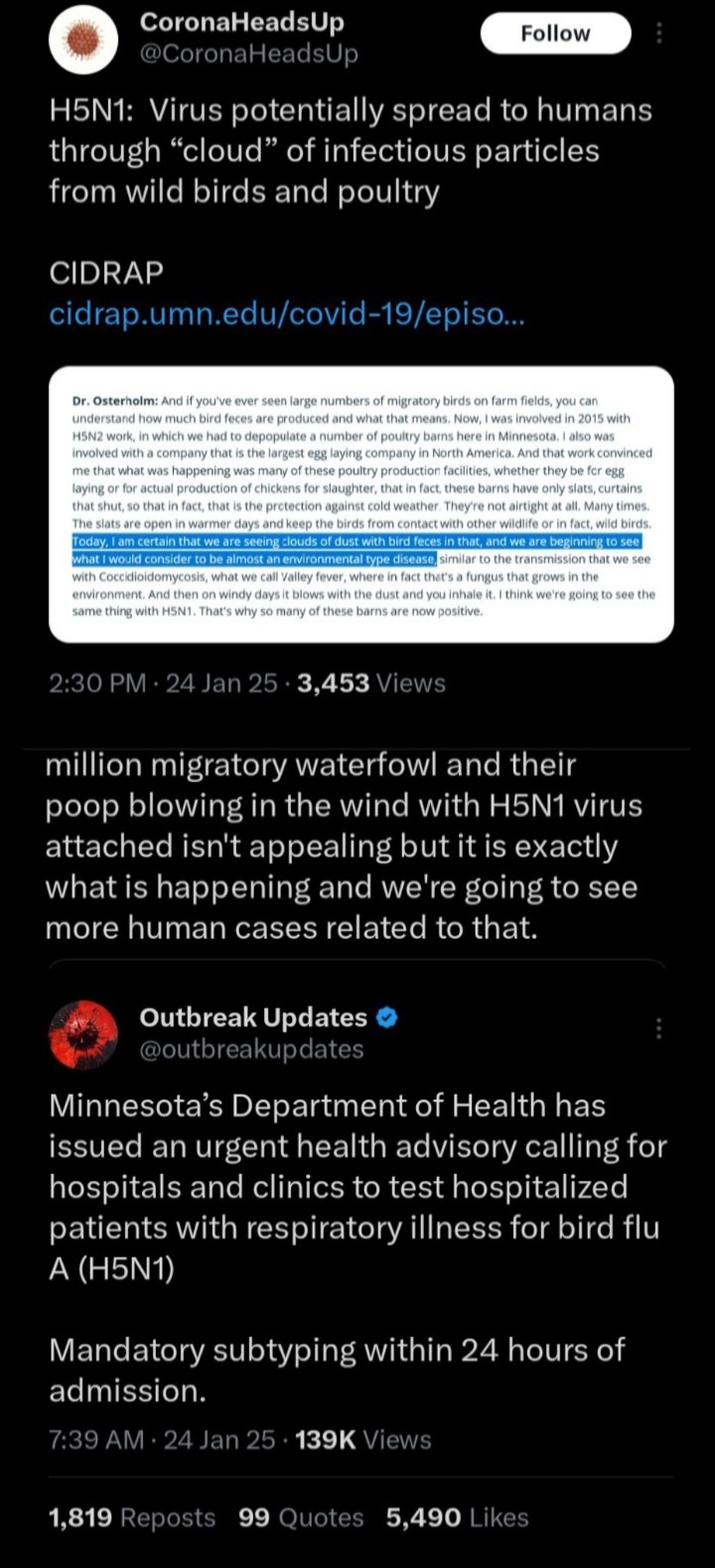

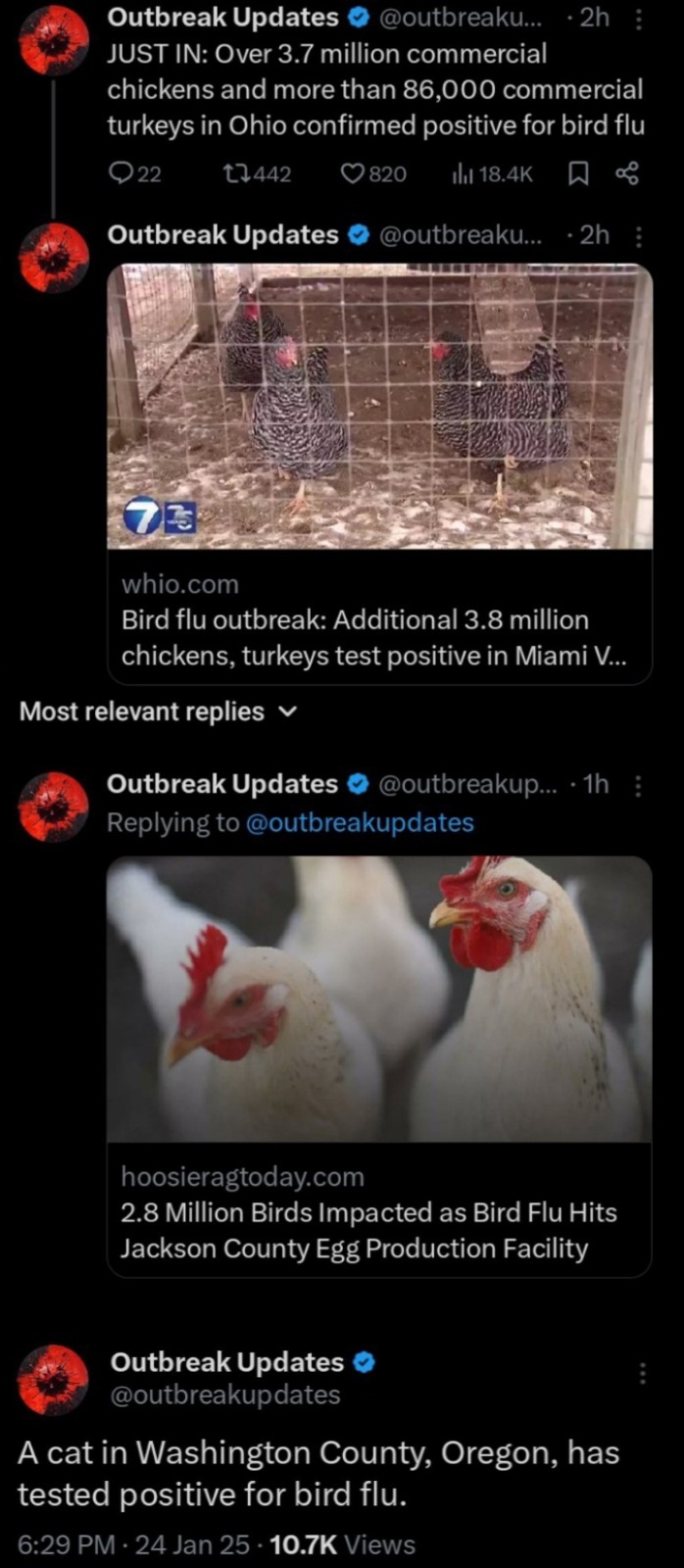
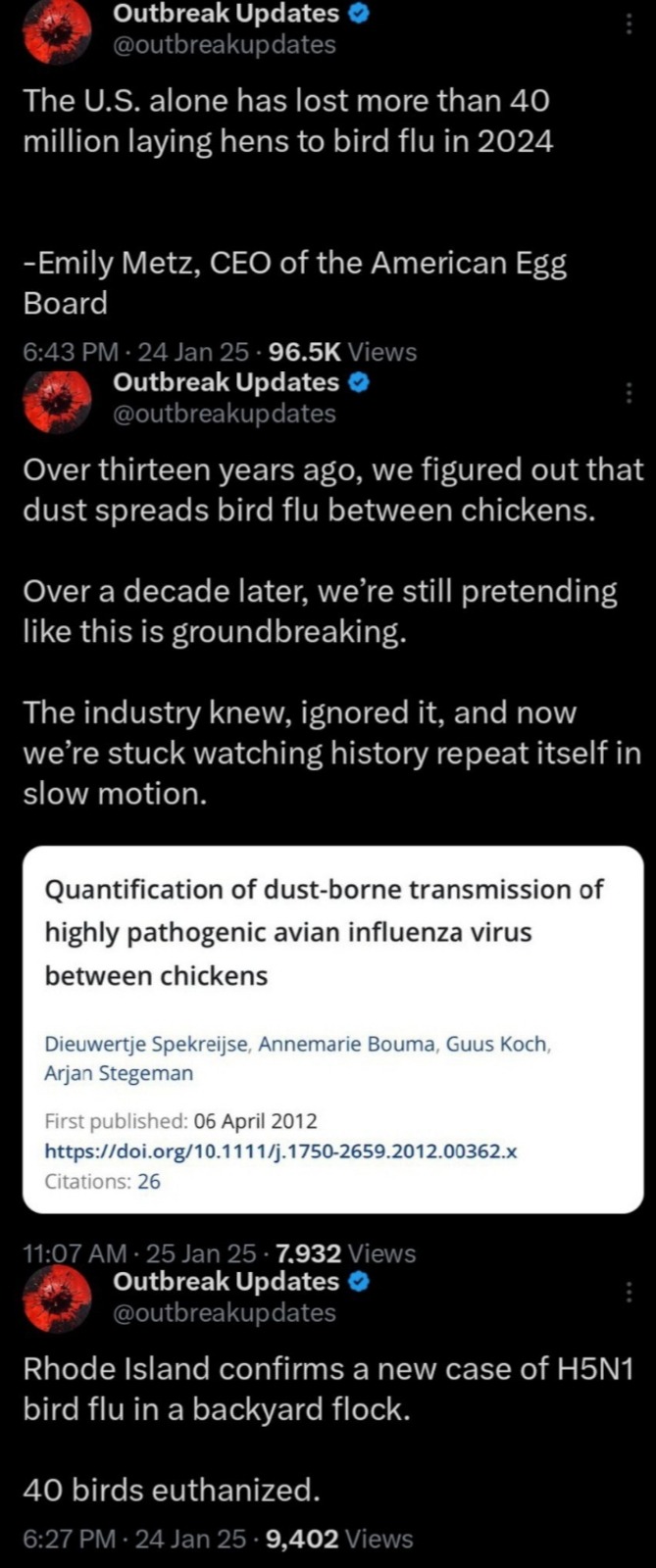
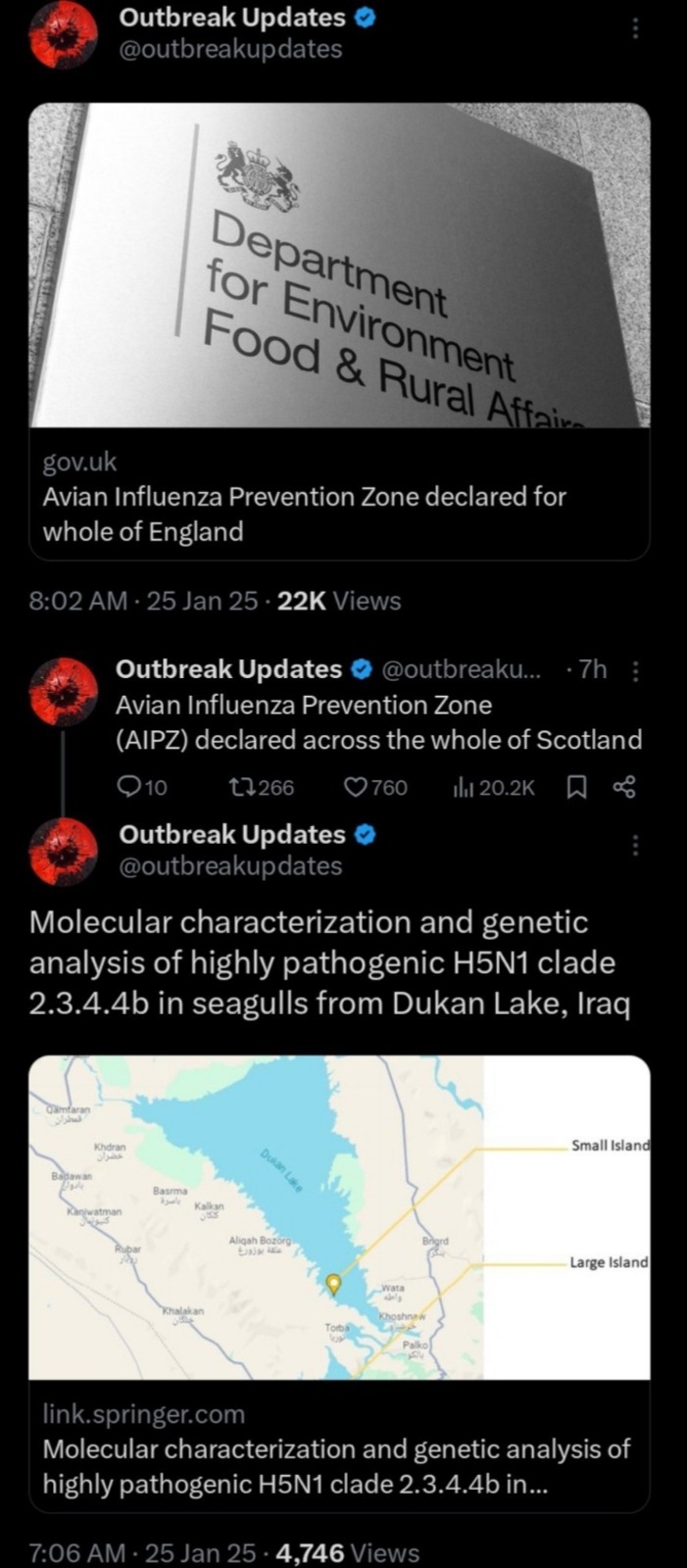
Related: As of 1/26/25
- Kansas, USA is experiencing its highest record cases of tuberculosis in its entire history!
- New case of Polio recorded in Afghanistan
- India saw its first death in 101 confirmed cases of Guillain-Barré Syndrome (16 people are on ventilators)
A warmer planet is only going to exacerbate the spread of diseases worldwide moving forward. Mask up!
#under the trump administration we don't stand a chance i fear#h5n1#bird flu#h5n1 bird flu#h5n1 virus#donald trump#us politics#pandemic#virus#covid 19#covid#cdc#us fda
490 notes
·
View notes
Text
Also preserved on our archive
Coronaviruses like COVID, influenza and respiratory syncytial virus (RSV) “must be taken seriously” as they are particularly dangerous for at-risk groups including the elderly, pregnant women and people suffering from existing or chronic illness, WHO Europe insisted, as it launched a region-wide protection campaign.
“Collective amnesia on COVID-19 has set in and this is concerning,” said WHO Regional Director for Europe, Dr Hans Kluge. “Individuals, communities, and countries understandably want to move on from the trauma of the pandemic years. Yet COVID-19 is still very much with us, co-circulating with other respiratory viruses.”
European spotlight The WHO official noted that 53 countries across Europe and Central Asia still experience up to 72,000 deaths from seasonal influenza, accounting for approximately 20 per cent of the global burden. “The vast majority of these deaths can be prevented,” he said, adding that the most vulnerable “must be protected” by vaccine immunization, which is proven to prevent illness and severe outcomes.
In the 28 days to 22 September, health authorities in WHO’s European region reported just over 278,000 COVID-19 cases and 748 deaths, from Cyprus to Moldova and from Ireland to Russia. Those numbers are higher than any other WHO region and are likely underestimates, the UN health agency said.
According to WHO data, COVID-19 has killed more than seven million people since the outbreak began in late 2019, with most deaths reported in the United States (1.2 million), Brazil (702,000), India (534,000) and Russia (403,000).
Unpredictable pathogens “COVID-19 devastated every corner of the planet,” Dr Kluge said. “Mpox clade II emerged unexpectedly in Europe in 2022 and continues to circulate in the region, even as mpox clade I in Central-East Africa has triggered a Public Health Emergency of International Concern. And RSV and influenza will continue to co-circulate with heightened intensity in the coming months, especially with more people gathering indoors due to colder weather.”
National health authorities should fulfil their role of protecting vulnerable populations, the WHO senior official continued, as he urged greater investment in public healthcare to protect overburdened healthworkers.
New and existing viruses can “wreak havoc on health systems, economies, and society,” Dr Kluge warned, in a call for regular and consistent surveillance and monitoring to “ensure we are ready for the next major health emergency, whenever and wherever it comes”.
As part of a WHO Europe public health campaign to prevent the spread of influenza and other respiratory diseases, the UN agency noted that key protective measures include staying at home when sick, practising hand and cough hygiene, and ensuring proper ventilation.
Vulnerable populations who also include those with weakened immune systems and anyone who believes they may have caught a respiratory virus should wear a close-fitting mask in crowded or enclosed spaces, WHO added.
“Protecting against respiratory viruses is the shared responsibility of governments and all of society,” WHO’s Dr Kluge said. “Everyone should play their part in fostering a culture of care and solidarity with the vulnerable.”
#mask up#covid#pandemic#covid 19#wear a mask#public health#coronavirus#still coviding#sars cov 2#wear a respirator#RSV
44 notes
·
View notes
Note
dear miss c! you're doing the lord's work by helping out us less read folks.
would you mind suggesting some works (books/papers/articles /essays) related to the following topics:
1. Poverty (in the Post Pandemic world)
2. Power and Crisis
3. Women in the Workforce
4. State of education in Rural India during Crisis
5. Neo-colonialism
I'm asking a lot, but help a girl out plis 🫶🏼
thankyou. 🕊️💌
Hello! I can't address all of these, but here's what I have:
Poverty
The Roots of the Global South’s New Resentment by Mark Suzman (Foreign Affairs)
COVID 19, Consumption and Inequality by Mudit Kapoor, Shamika Ravi and A. K. Shiva Kumar
Covid-19 and poverty vulnerability by Fabian Mendez Ramos and Jaime Lara
Workforce Participation
Workfare as an Effective Way to Fight Poverty: The Case of India’s NREGS by Shamika Ravi and Monika Engler
Empowerment and Microfinance in India by Shamika Ravi, Ashok Rai
Neocolonialism
The Great Divergence by Kenneth Pomeranz: not neocolonialism per se, but discusses the origins of current global inequality in wealth distribution, and it traces this to colonialism
Conflict, Competition and Cooperation in the Sociology of Development and Social Transformations by Ulrike Schuerkens
An Introduction to World-systems Perspective by Thomas Shannon: the world-systems theory is pretty much the foundation of how neocolonialism is thought about, and this is a good introduction to it
Postmodern Imperialism: Geopolitics and the Great Games by Eric Walberg: on the long tail of imperialism and colonialism
Happy reading! Also, I'll update this if I find more resources for you.
70 notes
·
View notes
Text
Here’s a reminder of how the psy-op started. It came from the US DoD, WHO and leading medical journals.
“According to the World Health Organization (WHO), in 2020, the case fatality rate for COVID-19 was stated to be around 3.4% by WHO Director-General Tedros Adhanom Ghebreyesus. “
“A study published in JAMA (February 7, 2020) reporting a CFR of 4.3% among hospitalized patients.
A study published in The Lancet (January 24, 2020) estimating a CFR of less than 5% for the 2019-nCoV outbreak.”
Over the last give years, there have been 700 million cases, and 7 million deaths “diagnosed” with the bogus RT-PCR and lateral flow tests. Probably 90% of deaths diagnosed with SARS-COV2 “present” were NOT the CAUSE of death, perhaps a contributing factor amongst 2-6 existing co-morbidities/
The implication is that there were NOT 700 million “cases” and 7 million deaths – but just 63 million global “cases” – probably of influenzas like illnesses and pneumonia – and 630,000 deaths over FIVE YEARS!!!! Out of 62 million deaths a year globally.
A scam.
Other factors contributing to the psy-op came from videos like this one from China. 25 million people in Shanghai under lockdown.
Locked Down Shanghai Residents Scream From Apartments
Skip to the 45-second mark for the screaming.
Or headlines like this one from a fully paid-up member of the “Trusted News Initiative” propaganda cartel.:
Covid-19: India outrage over 'no oxygen shortage death data' claim - BBC News
Whist listening to VSRF with John Beaudoin last night, I was struck by Steve Kirsch’s wish for data that contrasted sharply with John Beaudoin’s desire to identify individual circumstances around each death.
10 notes
·
View notes
Text
The Impact of COVID-19 on Healthcare Systems
Written by Dev
The COVID-19 pandemic hit healthcare systems worldwide, exposing serious weaknesses and forcing rapid changes. Hospitals were overwhelmed with patients, leading to shortages of beds, oxygen, and protective gear. In places like India, where the healthcare system was already under pressure, these shortages were especially severe, with many patients struggling to get care.
As hospitals focused on treating COVID-19, many regular services like surgeries, cancer treatments, and vaccinations were delayed or canceled. This led to other health issues, like an increase in maternal and child deaths due to lack of access to basic care. For children, interrupted vaccination programs risked future outbreaks of preventable diseases, making this health crisis even worse in the long run. Additionally, multiple countries lacked the proper monetary resources and funding to effectively handle this disaster, aggravating the strain on resources, since the ones that were able to receive healthcare were receiving the same in poor quality, leading to occasional incomplete treatments of the same.
Since all medical resources went towards Covid-19 patients, there was a strain on treating other diseases like Cancer, multiple STDs, etc. Additionally, the lockdown also prevented routine check-ups, leading to a surge in patients with worsening conditions, not necessarily involved with Covid-19. The frequent postponing of health check-ups caused multiple disadvantages, and is a variable that could have lessened the load on the healthcare system.
The pandemic also triggered a disturbing rise in attacks on healthcare workers. According to the World Health Organization (WHO), healthcare staff worldwide faced violence, abuse, and stigma. In many cases, healthcare workers were wrongly seen as “spreaders” of COVID-19, leading to harassment and even physical assault. This fear and misinformation affected not only healthcare workers’ safety but also made it harder to provide medical care.
Mental health issues increased during the pandemic too. Many healthcare workers struggled with stress, burnout, and trauma due to high patient death rates and long hours. The importance for mental health was severely underscored during the time of the pandemic, considering extreme levels of anxiety between not only patients but also regular people. People outside the healthcare field also faced mental health challenges from lockdowns, isolation, and fear of infection. With demand for mental health services rising, healthcare systems struggled to keep up. Health scares combined with break in routine spread widespread paranoia within the people.
However, the crisis did lead to some useful changes, like the growth of telemedicine, which allowed patients to talk to doctors remotely. This made it easier for people to get healthcare without leaving their homes and helped hospitals reduce patient crowding. Many healthcare providers also set up drive-through testing and vaccination centers to make these services more accessible. These new methods of delivering healthcare might continue to improve access even after the pandemic.
Additionally, it introduced newever, more enhanced protocols when faced with death or serious situations, which only improved time and response of healthcare systems. The anxiety and mental stress caused by the pandemic also increased the availability of mental health resources and help to people, a part that helped reduced the stigma surrounding mental health.
COVID-19 has shown that healthcare systems need to be stronger and more flexible to handle future crises. Governments and healthcare leaders are encouraged to invest more in public health, improve safety protections for healthcare workers, and support mental health resources. By learning from COVID-19, healthcare systems can better protect both patients and providers when the next crisis comes.
#covicare#covid#covid 19#group#health#post covid#awareness#mental health#team#wellbeing#article#blog#healthcare system#healthcare
4 notes
·
View notes
Text
The violent persecution of alleged "witches" has become a much deadlier, more widespread issue over the last 50 years than it ever was during the 300-year span of the European and Colonial Witch Trials -- and the issue is only getting worse.
CW: this post involves an ongoing human rights issue, with references to religious violence, child abuse, and murder
Violent attacks against alleged "witches" are becoming increasingly common in both rural and urban population centers throughout the world, and much of that violence occurs in places where religious fundamentalism (especially Evangelical Christianity) has collided with severe socio-economic instability. It is especially common for young children to be targeted in these attacks.
Between 1960 and the year 2000, it's estimated that more than 40,000 people in Tanzania alone were murdered due to the belief that they were "witches." Many others have been killed in similar incidents in more than a dozen other countries (on several different continents).
Over the course of the last 100 years, it's estimated that there have been hundreds of thousands of deaths related to witchcraft allegations. Millions of people have also faced other forms of persecution, including imprisonment, torture, starvation, mob violence, branding, burning, flogging, public humiliation, and arson attacks. Many have been subjected to less violent forms of persecution, including abandonment, the confiscation of land and/or property, and the loss of parental or custodial rights; they are often denied access to education, employment, housing, and/or healthcare, too.
Millions of people are currently suffering as a result of these practices, and much of the abuse is now inflicted upon young children, who face allegations of being "child witches."
This issue is especially apparent in Nigeria, Tanzania, the Democratic Republic of the Congo, Ghana, Angola, South Africa, Papua New Guinea, Fiji, Micronesia, Vanuatu, and India, but it has also been documented in countries like Nepal, Indonesia, Afghanistan, Syria, Saudi Arabia. Colombia, Guatemala, Mexico, Bolivia, Haiti, Poland, and the UK.
And it's only getting worse -- this issue is continuing to spread throughout different parts of the world, often facilitated by the destabilizing effects of the COVID-19 pandemic and the escalation of economic, environmental, and political crises, along with the rising popularity of Christian fundamentalism (or, in some cases, Islamic fundamentalism). As a result, acts of violence targeting "witches" have become increasingly normalized and are occuring with greater frequency throughout much of the world. The formal persecution of so-called "witches" by various governments has also become more common.
These are just a few examples of the "witch-hunting" incidents and issues that have developed over the last few decades:
It's estimated that most of the 25,000-50,000 children who live on the streets of Kinshasa (in the Democratic Republic of the Congo) were originally abandoned because their families believed that they were "witches." Many of these children were still just infants when they were abandoned.
Thousands of churches/pastors in the DRC, Angola, and Nigeria are known to perform "deliverance" ceremonies (i.e. exorcisms) on alleged "witches" for financial gain; the same pastors are usually the ones who identify these "witches" in the first place. Human Rights Watch and the UN High Commissioner for Refugees both estimate that as many as 50,000 children, having been identified as "witches," may still be imprisoned in religious buildings throughout the DRC, where they await "deliverance" ceremonies in which they often face abuse, violence, torture, and sometimes even death under the pretense of spiritual cleansing. During the "deliverance" ceremony, some victims are forced to drink battery acid, or the battery acid may be poured into their eyes, and many of the children are permanently blinded or disfigured by chemical burns.
In Ghana, a series of settlements known as "witch camps" have been established to provide shelter/safety to women who have been branded as "witches." Many of these women are widows with small children, and the children are often sheltered in the camps alongside their mothers. Local schools generally refuse to provide these children with an education. It is estimated that the "witch camps" in Ghana currently house between 1,000 and 2,500 women in total, along with hundreds of children, and some women have been residing in the camps for more than 40 years.
In India, records indicate that more than 2,500 people who were accused of practicing witchcraft were then captured, tortured, and killed between the years 2000 and 2016.
From 1996 to 2001, more than 600 so-called "witches" were killed in the Limpopo Province of South Africa.
When a wave of "witch-hunts" swept through East Java (Indonesia) in 1998, more than 200 people were killed over the course of just a few months.
From 2010 to 2011, more than 20 elderly women were murdered in Zimbabwe after facing allegations of witchcraft.
In 2008, the Gambian government imprisoned 1,000 alleged "witches" in a detention center, where they were tortured and forced to consume a dangerous hallucinogenic concoction.
In 2007, more than 200 suspected "witches" were killed within a single province in Papua New Guinea.
Reports indicate that thousands of women in the Indian state of Jharkand are formally accused of practicing witchcraft each month, and that hundreds of these women are beaten, tortured, and/or killed. In some of the most violent cases, the victims have had their eyes gouged out, and some have been set on fire. Others are forced to endure forms of public humiliation.
In May of 2008, 15 alleged "witches" in a region of Kenya were set on fire and executed by an angry mob.
In recent years, at least five different individuals have been officially executed by the government of Saudi Arabia on charges of practicing "sorcery." Other purported "sorcerers" have been tried and convicted in Saudi Arabia, though some have received public floggings (and other forms of torture) instead of the death penalty, and some are currently in prison awaiting trial. Saudi Arabia also has the dubious distinction of having its own official, state-sponsored "Witch-hunting Task Force."
Between the years 2000 and 2010, at least six children in the UK were also killed due to "child witch" allegations, and several other cases of non-lethal abuse have been documented there.
This form of violence has been on the rise for several decades now, and it occurs in many different cultural contexts. It goes without saying that there is no simple, one-size-fits-all explanation for all of these incidents, nor is there a simple explanation for the beliefs that have led to such practices. Religious rhetoric is obviously a driving factor, but there are other circumstances that may also contribute, including socio-economic disparities, social frustrations, a lack of resources, a compulsion to assign blame, the fear of "Otherness," etc. -- essentially the same factors that have always contributed to the witch-hunt phenomenon, and to scapegoating at large.
But there are some interesting trends that appear in the cases from West Africa, Central Africa, and Melanesia, where violent attacks against "witches" are especially prevalent: it's clear that these acts of violence are often intertwined with a particularly dangerous blend of Evangelical Christianity and socio-economic instability.
In Nigeria, for example, popular Pentecostal preachers like Helen Ukpabio have explicitly promoted the belief in "child witches," and they have encouraged the parents of the accused "witches" to subject their children to the cruel, abusive, and often violent exorcism rituals that are offered by local preachers...for an enormous fee, of course.
This article explains how religious leaders in Nigeria will often perpetuate and then exploit the belief in "child witches:"
The devil's children are "identified" by powerful religious leaders at extremist churches where Christianity and traditional beliefs have combined to produce a deep-rooted belief in, and fear of, witchcraft. The priests spread the message that child-witches bring destruction, disease and death to their families. And they say that, once possessed, children can cast spells and contaminate others.
The religious leaders offer help to the families whose children are named as witches, but at a price. The churches run exorcism, or "deliverance" evenings where the pastors attempt to drive out the evil spirits. Only they have the power to cleanse the child of evil spirits, they say. The exorcism costs the families up to a year's income.
During the "deliverance" ceremonies, the children are shaken violently, dragged around the room and have potions poured into their eyes. If the ritual fails, the parents know their children will have to be sent away, or killed. Many are held in churches, often on chains, and deprived of food until they "confess" to being a witch.
The ceremonies are highly lucrative for the spiritual leaders, many of whom enjoy a lifestyle of large homes, expensive cars and designer clothes. Some Nigerians blame the increase on one of the country's wealthiest and most influential evangelical preachers. Helen Ukpabio, a self-styled prophetess of the 150-branch Liberty Gospel Church, made a film, widely distributed, called End of the Wicked. It tells, in graphic detail, how children become possessed and shows them being inducted into covens, eating human flesh and bringing chaos and death to their families and communities.
Mrs. Ukpabio also wrote a popular book which tells parents how to identify a witch. For children under two years old, she says, the key signs of a servant of Satan are crying and screaming in the night, high fever and worsening health - symptoms that can be found among many children in an impoverished region with poor health care.
It's important to note that these "exorcism" and "witch-hunting" rituals have no real precedent among the native cultures of Nigeria -- they are a product of the modern rise of religious fundamentalism, the spread of Evangelical Christianity, widespread inequality and strife, and a general commitment to spiritualism. When those elements are combined, they form the perfect recipe for violence.
As this article explains:
Although traditional beliefs in witch doctors are not so deeply buried in people's memories, and although there had been indigenous Christians in Nigeria since the 19th century, it is American and Scottish Pentecostal and evangelical missionaries of the past 50 years who have shaped these fanatical beliefs.
There is a degree of volatility that often arises when Evangelical beliefs about spiritual warfare, Satan, strife, and witchcraft are preached to communities that are already facing severe socio-economic challenges, especially in places where the scars of colonialism are still fresh.
The uncertainty and strife that often exists within these communities is framed as a direct consequence of "Satanic" influences that have infiltrated the community itself, manifesting in the form of an actual person...and the most vulnerable people (i.e. children, widows, elderly women, and disabled people) are usually singled out as those manifestations of evil. They are viewed as Satanic emissaries who are directly responsible for causing tragedy and hardship within the community, and the accused "witches" must then be punished and purged. They are a perfect target for all of the community's frustrations.
Similar circumstances can also be found in many parts of Melanesia -- especially in Papua New Guinea, where extreme Pentecostal rhetoric has likewise interacted with existing conditions to encourage the (often violent) persecution of alleged "witches."
This excerpt from The Introduction to Pentecostal Witchcraft and Spiritual Politics in Africa and Melanesia describes the religious rhetoric that has developed in Papua New Guinea:
In 1992, a well-orchestrated upsurge of third wave evangelism and apocalyptic thinking took off in the Mountain Ok area, which had a considerable influence on people’s lives and thinking. Jorgensen (2005) specifically addresses a local movement called "Operation Joshua" and the centrality of "spiritual warfare" within it. The focus of this movement was to attack directly invisible evil forces such as witchcraft and sorcery through "spiritual mapping," "healing," and "crusades." Through this confrontational, aggressive, and effective form of evangelism numerous charismatic movements and campaigns found their way into PNG, Fiji, the Solomon Islands, and Vanuatu.
During an intensive period in 2014, the entire Christian congregation of the small island of Ahamb in Vanuatu came out of their church building and besieged every corner of their island in order to drive out demons and evil spirits. It culminated in a witch hunt, where people of the congregation ganged up on accused witches, and in the end killed them by hanging them in the community hall.
The author also notes the influence of similar Pentecostal rhetoric in the "witch-hunts" that have taken place in certain parts of Africa:
... the demonization of children also highlights the crucial role played in the persecution of "witches" by the Christian Pentecostal sects that have proliferated in urban and rural Africa during the last twenty years ... the connection between Pentecostalism and the persecution of witches is well documented, possibly providing a clue to the rapid expansion of witch-hunting in so many different parts of the planet. ...
Through books and open-air sermons in market centers and other public spaces, evangelists increased people’s anxiety about their social environment, preached a connection between Satan, illness and death and incited a spiritual warfare of sorts.
I know this is a very lengthy post, so I'll try to wrap it up. I just wanted to share some of this information, along with the following list of advocacy and aid groups, because very few people seem to be aware of the fact that this issue even exists.
Advocacy & Humanitarian Aid Groups:
Land of Hope
Safe Child Africa
South African Pagan Rights Alliance
Relief for Witch-Hunt Victims (Hexereianklagen)
Stop Sorcery Violence
Bethany Children's Trust: SCWA
Stop Child Witch Accusations
Sources & More Info:
The New York Times: The Persecution of Witches, 21st Century Style
BBC: Branded and Beaten: the children accused of witchcraft and murder
Reuters: Killing of Women, Child "Witches" is on the Rise, U.N. Told
CNN: Abuse of Child "Witches" on the Rise, Aid Group Says
New York Times: Women in Gambia Describe Torture After Ex-President Called them Witches
The United Nations High Commissioner for Refugees: Witchcraft Allegations, Refugee Protection, and Human Rights (PDF)
Reuters: Children Accused of Witchcraft Find Solace in East Congo Shelter
Sydney Morning Herald: East Java Villagers Hunt Witches to Put an End to Nightmares and Sickness
Scientific American: Witch Hunts Today
Journal of Early Child Development and Care: Branding and the Abuse of African Children in the UK
#human rights#humanitarian crisis#crimes against humanity#persecution#oppression#humanitarianism#witchcraft#witch hunts#witch trials#child abuse#child witches#evangelical christianity#pentacostalism#religious violence#religious abuse#scapegoating#religion#activism#advocacy#nigeria#melanesia#democratic republic of the congo#21st century witch trials#human rights issues#cw violence#cw abuse#paganism#witchcraft allegations#papua new guinea#gambia
4 notes
·
View notes
Text
Monkeypox Vaccine How Global Health Systems Are Responding
Introduction
Monkeypox Vaccine , a viral zoonotic sickness that ordinarily impact animals but may be transmitted to humans has garnered international interest because of its recent outbreaks. In India, the nation of Haryana has confronted its own demanding situations related to this sickness. This articles delves into the emergence of monkeypox in Haryana, the kingdom responses to the outbreak and the results of public health and safety.

Overview of Monkeypox
It is caused by the Monkeypox Symptoms virus, a member of the Orthopoxvirus genus, which additionally consists of smallpox. The disease became first recognized in laboratory monkey in 1958, and the first human case became pronounced inside the Democratic Republic of Congo in 1970. It is characterised by signs and symptoms similar to smallpox, although generally milder. These signs and symptoms include fever, headache, muscles aches, Backaches, swollen lymph nodes, chills and exhaustion. A hallmark of the disorder is the development of a rash that progresses via extraordinary levels, subsequently forming scrabs.
The ailment is generally Monkeypox treatment transmitted to people through contact with inflamed animals, which include rodent or primates, or via direct touch with physical fluids or infected materials. Human to human transmission can occur via breathing droplets or touch with pores and skin lesions.
Monkeypox in India and Haryana
Monkeypox virus vaccine in current years there had been sporadic instances of monkeypox said worldwide, including in diverse areas of India. Haryana, a state in northern India, has now not been proof against this worldwide fitness difficulty. The first big cases in Haryana were reported in mid-2023, marking a high-quality development in the country’s public fitness panorama.
The initial cases in Haryana raised alarms among fitness authorities due to the potential for fast spread and the results for public fitness. As monkeypox is not as well-known or as widely understood as different illnesses like COVID-19, its emergence supplied unique challenges for both healthcare vendors and the general public.
Initial Response and Measures
Upon the identification of monkeypox cases in Haryana, the state authorities, in conjunction with countrywide health agencies, carried out a sequence of measures to manipulate the spread of the sickness.
Surveillance and Monitoring
Health authorities multiplied surveillance efforts to track the unfold of monkeypox. This involved monitoring folks who had come into touch with confirmed cases and carrying out follow-up assessments to pick out any new infections.
Public Awareness Campaigns
Recognizing the importance of public recognition, the government launched instructional campaigns to tell residents about monkeypox signs, transmission strategies, and preventive measures. This protected disseminating information thru numerous media channels
Healthcare Preparedness:
Hospitals and healthcare centers had been ready with the important assets to address monkeypox instances. This included training healthcare workers on a way to recognize, diagnose, and deal with monkeypox, in addition to ensuring that appropriate isolation and infection manage measures have been in vicinity.
Travel and Movement Restrictions
In areas where monkeypox instances have been concentrated, localized journey and movement restrictions had been imposed to prevent in addition unfold. This was in particular relevant in densely populated urban regions in which the hazard of transmission changed into higher.
Coordination with National and International Agencies
Haryana's reaction was coordinated with national health authorities, along with the Ministry of Health and Family Welfare, and global businesses just like the World Health Organization (WHO). This ensured that the country’s moves had been aligned with broader public fitness techniques and first-rate practices.
Challenges Faced
Limited Awareness and Stigma
It became no longer well known among the overall public, main to confusion and misinformation. Additionally, the stigma related to infectious diseases now and again impeded open discussion and well timed reporting of symptoms.
Healthcare System Strain
Managing an epidemic requires significant assets and may strain the healthcare machine. Hospitals and clinics had to balance their ordinary responsibilities with the improved demands of coping with monkeypox cases.
Public Compliance
Ensuring public compliance with fitness advisories and restrictions become another project. Some people can also were reluctant to stick to guidelines or may had been skeptical approximately the severity of the ailment.
Data Management
Accurate information collection and management are important for powerful disease control. The want for actual-time information on case numbers, contacts, and geographic unfold offered logistical challenges.
Impact on Public Health
Increased Health Awareness
The outbreak highlighted the significance of being vigilant approximately emerging infectious illnesses. It spurred discussions on enhancing public fitness infrastructure and disorder preparedness.
Strengthened Health Policies
The experience brought about a reassessment and strengthening of health regulations and protocols associated with infectious ailment management, specifically zoonotic diseases.
Enhanced Surveillance Systems
The outbreak underscored the want for strong surveillance structures to come across and respond to comparable outbreaks within the destiny.
Community Engagement
The response efforts emphasised the position of network engagement in handling fitness crises. Educating the general public and concerning network leaders were essential additives of the reaction approach.
Preventive Measures and Future Outlook
Ongoing Education
Continuous public schooling on monkeypox and different rising illnesses is critical. Awareness campaigns ought to cope with signs, preventive practices, and the importance of looking for scientific interest.
Strengthened Surveillance
Maintaining and improving surveillance systems enables in early detection and speedy reaction to ability outbreaks.
Research and Development
Investing in studies to higher apprehend and expand powerful vaccines and remedies is critical for lengthy-time period prevention and manipulate.
International Collaboration
Monkeypox prevention global collaboration is critical for coping with sicknesses that cross borders. Sharing information, sources, and information can help in efficaciously addressing outbreaks.

2 notes
·
View notes
Text
India was able to save more than 3.4 million lives by undertaking a nationwide Covid-19 vaccination campaign at an unprecedented scale, according to a Stanford University report.
The campaign also yielded a positive economic impact by preventing a loss of $18.3 billion, the working paper by Stanford University and Institute for Competitiveness titled 'Healing the Economy: Estimating the Economic Impact on India's Vaccination and Related Issues' released by Union health minister Mansukh Mandaviya on Friday suggested.
According to the Stanford report, the direct and total impact of vaccination varied from about $ 1.03 billion to $ 2.58 billion if minimum wages are considered within the age distribution category.
“The same, however, varied from about $3.49 billion to $ 8.7 billion if GDP per person employed (constant) is considered. The cumulative lifetime earnings of the lives saved through vaccination (in the working age group) rolled up to $ 21.5 billion. Moreover, since vaccination also saved the lives of the elderly, this indirectly helped prevent the health infrastructure from getting overwhelmed and thereby allowing for a more judicious use of the existing health infrastructure,” the report suggested.
Mandaviya said much before Covid-19 was declared a public health emergency by the World Health Organisation (WHO) in January 2020, processes and structures to focus dedicatedly on various facets of the pandemic management were put in place...
The Stanford working paper refers to a Lancet modelling study which estimated that in India around 3.4 million deaths were prevented by vaccination in the year 2021, an estimate based on officially reported deaths in India.
The paper also highlighted the impact of the lockdown and referred to the health ministry’s statistical analysis that the Covid-19 tally could have reached about two lakh (0.2 million) without lockdown by April 11, 2020.
Due to lockdown measures, the actual cases only went up to about 7,500 by April 11, 2020, making a case for the lockdown stronger."
-via Times of India, 2/25/23
#india#covid#covid 19#vaccination#pandemic#covid relief#science and technology#public health#lockdown#good news#hope
43 notes
·
View notes
Text

[Image Generated using DALL - E]
Reflecting on the case and the marketing strategies of Corona and Heineken reveals a tale of two varied approaches, each with its unique implications in the competitive landscape of the beer market.
As I read the case- I kept comparing the dynamic nature of advertising and selling beer in the US. Having grown up in India- the nature of ads from alcohol companies were very different. My reflection highlights some of the areas where regulatory frameworks lead to innovative marketing tactics such as surrogate advertising.
Finally- I could not help but wonder what the impact of the pandemic was on a brand like Corona (for obvious reasons). I remember listening to a podcast back in the day about the ultimate positive effect the pandemic had on beer consumption in the US, and my final point covers that.
Corona and Heineken's Divergent Paths Corona’s growth in the U.S. market, challenging Heineken's long-standing dominance, serves as an example of how brand imagery and lifestyle alignment can reshape market dynamics. While Heineken has promoted its brand as a premium quality, heritage, and sophisticated one, Corona adopted a different strategy. Its marketing campaigns evoked a sense of relaxation, escapism, and the simple pleasures of life, epitomized by the iconic image of a lime-wedged bottle on a sun-drenched beach.
The Indian Context: Surrogate Marketing Turning to the Indian market, where direct advertising of alcoholic beverages is prohibited, brands have resorted to surrogate marketing to make their presence felt in the consumers' minds. Companies promote products that share the brand name with the alcoholic beverage, such as music CDs, water, or even airlines, thereby maintaining brand recall.
For long, some of the funniest and most memorable ads, usually came from such brands. This strategy, while requiring creativity and indirect messaging, highlights the complex interplay between regulatory environments and marketing innovation, allowing brands to build a presence in a market with strict advertising restrictions. (Alcohol brand selling "Music CDs": https://www.youtube.com/watch?v=9zhozmQCDYg&pp=ygUdbWVuIHdpbGwgYmUgbWVuIGltcGVyaWFsIGJsdWU%3D)
Lately, many brands have launched zero-alcohol products, using these as surrogates to gain market popularity. Heineken was definitely the winner in the Indian market – from my recollection, I never saw a Corona ad.
Any publicity is good publicity? - True for Corona!
The COVID-19 pandemic presented unique challenges particularly for a brand like Corona, given the unfortunate name association. Despite initial setbacks and market confusion (with rumors rife with association to the virus), Corona's marketing strategy demonstrated resilience and adaptability. Research suggested that the brand's visibility and consumer loyalty contributed to this growth, with each new COVID-19 case seemingly boosting Corona's sales by $5.30 weekly compared to other major beer brands. The article mentioned that Corona beer gained "accidental popularity" due to its name's association with the coronavirus, driving increased attention and sales during the pandemic. Link to article: https://www.marketplace.org/2022/12/30/how-did-the-pandemic-affect-the-corona-beer-brand/
2 notes
·
View notes
Text
Covid 19 in India | Coronavirus | COVID19 | covid19 cases | Covid19 Top updates | Covid19 news | Today Covid case
Covid 19 in India: First death from Corona after three months in Bengal, 1890 infected confirmed in 24 hours 1,051 patients have also recovered in the same period, which has increased the number of patients recovering from the corona to 4,41,63,883। As a result, India’s recovery rate is 98.79 percent. Image Source: FREEPIKFirst death from Corona after three months in Bengal Covid 19 in India:…
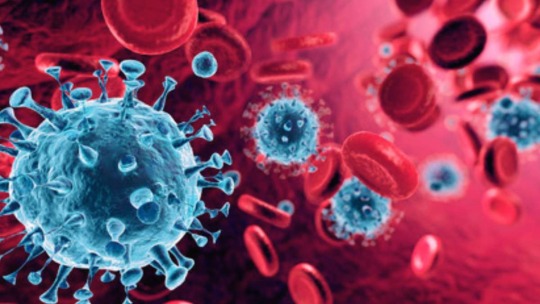
View On WordPress
#Coronavirus#Covid 19 in India#COVID19#covid19 cases#Covid19 news#Covid19 Top updates#Today Covid case
0 notes
Text
https://mediamonarchy.com/wp-content/uploads/2024/02/20240228_MorningMonarchy.mp3 Download MP3 Food costs, covert gardening and deep fried toothpicks + this day in history w/cyber lettuce and our song of the day by The Lethargics on your #MorningMonarchy for February 28, 2024. Notes/Links: Apple Kills Its Electric Car Project; The car, which Apple spent billions of dollars researching, had been intended as a rival to Tesla’s E.V.s, which include autonomous driving features. https://archive.is/7UaAG Bill Gates Partner GAVI Vaccine Alliance Targets Online Memes https://reclaimthenet.org/bill-gates-partner-gavi-vaccine-alliance-targets-online-memes How memes became health disinformation super-spreaders https://www.gavi.org/vaccineswork/how-memes-transformed-pics-cute-cats-health-disinformation-super-spreaders “Memes Save Lives”: Stigma and the Production of Antivaccination Memes During the COVID-19 Pandemic https://journals.sagepub.com/doi/full/10.1177/20563051231224729 Image: The guy who discovered milk trying to explain what he was doing https://cdn.discordapp.com/attachments/601835364159586344/1211245925352341564/image.png?ex=65ed7fac&is=65db0aac&hm=50f6ab7342ee84e85d97077cb2e0b1a1223063e1832a509998038bb2a59efcc8& Image: Bill Gates Partner GAVI Vaccine Alliance Targets Online Memes – Graffiti Version https://cdn.discordapp.com/attachments/601835364159586344/1211117025137524817/bill-gates-targets-memes.jpg?ex=65ed07a0&is=65da92a0&hm=9488fdf585ce8fe0fc2d67a0ea78b06f309aa5da7e85f759becaa0d037e3670b& New York Times writer says he was chided during staff orientation for liking Chick-Fil-A’s spicy chicken sandwich 🤣 https://vxtwitter.com/Not_the_Bee/status/1762165629652766910 // https://notthebee.com/article/just-in-case-you-were-wondering-how-insane-the-new-york-times-is Image: @Hybrid’s Cover Art – The Spicy Scoop’s ‘Red Hot Regret’ https://cdn.discordapp.com/attachments/983208466481029191/1212263370842050600/20240228_MorningMonarchy.jpg?ex=65f1333e&is=65debe3e&hm=f30fb9f29fb6c3326bf0950f05ad0528c7a78b48495751b4b4dd1a604203ff70& Wendy’s planning Uber-style ‘surge pricing’ where burger prices fluctuate based on demand https://nypost.com/2024/02/26/business/wendys-planning-surge-prices-based-on-fluctuating-demand/ Biden makes unexpected trip to Walter Reed for ‘physical’ as mental fitness speculation mounts https://nypost.com/2024/02/28/us-news/biden-heads-to-annual-physical-as-hunter-arrives-for-impeachment-deposition/ Farm Income Expected to Continue Steep Decline in 2024 https://www.lancasterfarming.com/farming-news/ag-business/farm-income-expected-to-continue-steep-decline-in-2024/article_bab62d90-cf5c-11ee-b20d-ab0e4a64a9c1.html Video: Farm Journal – AgDay Minute: Food costs hit 30-yr high (Audio) https://youtu.be/mvGxTT2eqlg X admits to taking down India farmers’ protest posts https://www.bbc.co.uk/news/world-asia-india-68366859 Amish farmer Amos miller update: upcoming hearing Feb 29th Lancaster co., pa https://x.com/freewill_farmer/status/1760999470387372490 #MounseyMinute: The first segment of the “Mounsey Minute” series on Media Monarchy aired recently! https://gavinmounsey.substack.com/p/the-first-segment-of-the-mounsey #MounseyMinute/#MorningMonarchy: January 24, 2024 – First installment of the Mounsey Minute @ 40:48 https://mediamonarchy.com/20240124morningmonarchy/ MP3: #MounseyMinute – Covert Food Gardening In the Age of Front Lawn Fanaticism (Audio) https://cdn.discordapp.com/attachments/597898944584089623/1212243255668768808/20240228_MounseyMinute.mp3?ex=65f12082&is=65deab82&hm=290efc2dc4904cc5cf2629ae3e58b1d45e99bcc15b002a6b8083fbb6886be7d9& #MounseyMinute: Covert Food Gardening In The Era Of The Lawn Nazis https://gavinmounsey.substack.com/p/covert-food-gardening-in-the-era #MounseyMinute: The Future of Food (Is Ours to Decide) https://corbettreport.com/the-future-of-food-is-ours-to-decide/ #MounseyMinute: Buy Gavin’s Book ‘Recipes For Reciprocity’ https://recipesforreciprocity.com/ Why is the ONS suddenly changing the “excess deaths” numbers? https...

View On WordPress
#alternative news#food world order#media monarchy#Morning Monarchy#mp3#podcast#Songs Of The Day#The Lethargics#This Day In History
2 notes
·
View notes
Text
Old News (Published Nov, 2022)
Also preserved on our archive
Pro-Tip: All covid-19 strains are capable of immune escape from both vaccination and acquired immunity from infection! Mask up to prevent the spread of covid and further mutation toward immune escape!
By Alice Park
New lab data suggest that vaccines and prior infections may not offer enough protection against several new COVID-19 variants cropping up in the U.S. and around the world.
Dr. David Ho, director of Columbia University’s Aaron Diamond AIDS Research Center (ADARC), and his team reported the results from a set of studies at an ADARC symposium. They showed how well some of the latest variants—BQ.1, BQ.1.1, XBB, and XBB.1, which were all derived from Omicron—are evading both vaccine-derived and infection-derived immunity.
These new variants all have mutations in the region that binds to cells and infects them, which means that they’re highly transmissible, as prior Omicron variants were. BQ.1 is growing steadily in France, according to the public database of SARS-CoV-2 variants GISAID. By mid-November, European health officials expect the variant to account for 50% of cases in Europe, and to become the dominant strain in that region by early 2023. XBB is growing quickly in Singapore and India. Both variants have spawned new strains that have each picked up an additional mutation to create BQ.1.1 and XBB.1. As of early November, BQ.1 and BQ.1.1, combined, now make up about 35% of new cases in the U.S.
Other studies have found similar drops in antibody protection against BQ.1 among vaccinated people. But Ho’s group conducted what is likely the most comprehensive look to date at BQ.1, BQ.1.1, XBB, and XBB.1, and how existing immunity—from the original mRNA vaccines, the new Omicron boosters, and natural infections—stands up to them. Scientists took blood sera from 88 people in five groups (below) and exposed it to the four variants in the lab. Here’s what they found:
Fully vaccinated and once-boosted people (three total shots of the original mRNA vaccines) had 37- and 55-fold lower neutralization against BQ.1 and BQ.1.1, respectively, than they did against the original SARS-CoV-2 virus, and about 70-fold lower neutralization against XBB and XBB.1. Fully vaccinated and twice-boosted people (four total shots of the original mRNA vaccines) had 43- and 81-fold lower neutralization against BQ.1 and BQ.1.1, respectively, than they did against the original virus, and 145- and 155-fold lower neutralization against XBB and XBB.1, respectively. Fully vaccinated and twice-boosted people (three shots of the original vaccine plus one Omicron booster) had 24- and 41-fold lower neutralization against BQ.1 and BQ.1.1, respectively, than they did against the original virus, and 66- and 85-fold lower neutralization against XBB and XBB.1, respectively. Fully vaccinated people who had received the original booster and who had been infected with BA.2 had 20- and 29-fold lower neutralization against BQ.1 and BQ.1.1, respectively, than they did against the original virus, and 103- and 135-fold lower neutralization against XBB and XBB.1, respectively. Fully vaccinated people who had received the original booster and who had been infected with BA.4 or BA.5 had 13- and 31-fold lower neutralization against BQ.1 and BQ.1.1, respectively, than they did against the original virus, and 86- and 96-fold lower neutralization against XBB and XBB.1, respectively.
The results show that people who had been infected with BA.2, BA.4, or BA.5 generally experienced the smallest drop in neutralizing antibody levels against against BQ.1 and BQ.1.1. But people who had three doses of the original vaccine and one Omicron booster produced only slightly better neutralizing antibody protection against XBB and XBB.1 than those who received three doses of the original vaccine. Public-health experts say that while vaccines may wane in efficacy against newer variants, they continue to protect people from severe COVID-19. There is early evidence that vaccine-induced immunity may also produce a broader range of virus-fighting antibodies over time.
Read More: BQ.1, BQ.1.1, BF.7, and XBB: Why New COVID-19 Variants Have Such Confusing Names
Still, these results are a reminder that vaccines and drug treatments need to evolve with the virus. “These new variants are extremely good at evading our antibodies and are very likely to compromise the efficacy of our vaccines,” says Ho. They may also dodge the available antibody-based treatments for COVID-19, he says. The National Institutes of Health’s COVID-19 Treatment Guidelines currently only include one monoclonal antibody therapy, bebtelovimab, because the virus has evaded all of the previously authorized antibody treatments. But in an October update, NIH scientists acknowledged that the “subvariants BQ.1 and BQ.1.1 are likely to be resistant to bebtelovimab.” The drug is therefore only recommended if people either can’t take the antiviral drugs Paxlovid or remdesivir, or if these medications aren’t available. The virus can evade these treatments as well, but they remain the first line of defense against severe SARS-CoV-2.
The good news is that in places where these variants are spreading, they do not seem to be linked to more severe COVID-19 disease—measured by hospitalizations and deaths—than other Omicron iterations. Still, public-health experts say a spike in infections could still strain health resources, especially as other respiratory infections, including influenza and RSV, also gain momentum. The combination of several circulating infectious diseases could mean more illness overall, and, in turn, more people who might experience severe disease and require intensive medical care.
The rise of BQ.1, BQ.1.1, XBB, and XBB.1 points to the fact that when it comes to immunity, the virus may always be one step ahead, especially with respect to vaccines. “I would start to make these vaccines, and start to test them in animals,” says Ho. Even if those efforts began now, it’s possible they may still lag behind the virus and the new mutations it continues to gain. That’s why researchers are working on developing vaccines that would be more universally applicable to a range of different coronaviruses, which could shorten the amount of time it takes to build up a vaccinated population’s immunity.
#mask up#covid#pandemic#wear a mask#public health#covid 19#wear a respirator#still coviding#coronavirus#sars cov 2#covid pandemic#covidー19#covid conscious#covid is airborne#covid isn't over#covid19
19 notes
·
View notes